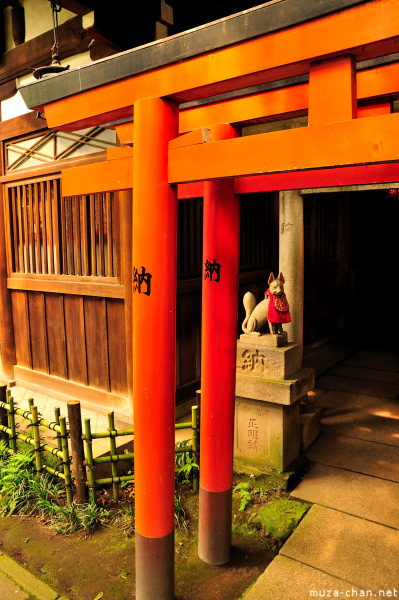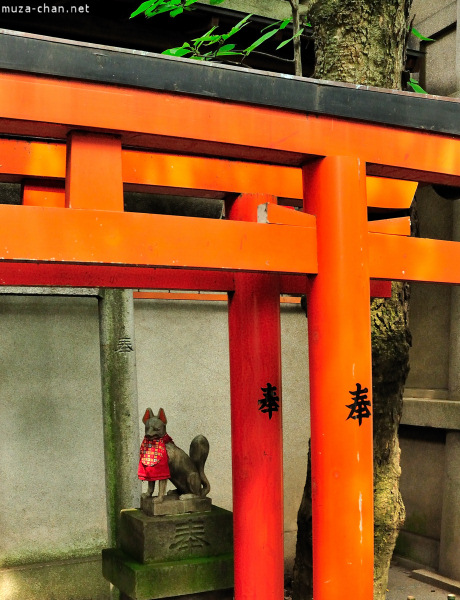At the entrance to the shrines of Inari, kami of fertility, rice, agriculture and industry, there are usually two statues of kitsune (foxes), a male and a female, the messengers of Inari and protectors against evil spirits.
There are several theories about how kitsune became Inari’s servant. An old Buddhist story tells us about a family of kitsune that traveled to the shrine at Inari Mountain, to offer their services and kami fulfilled their wishes, giving them the role of protectors.
Another theory is related to the foxes, that are hunting the rodents in the rice fields, thus protecting them.
Similar to koma-inu, one kitsune is represented with the mouth open, while the other is with the mouth closed, and is holding in its mouth the key to the rice granary, a sheaf of rice, a scroll or a fox cub.
De o parte şi de alta a intrării în altarele închinate lui Inari, kami al fertilităţii, orezului, agriculturii şi industriei, se află două statui de kitsune (vulpe), un mascul şi o femelă, mesageri ai lui Inari şi protectori contra spiritelor rele.
Există mai multe teorii despre cum au devenit kitsune mesageri ai lui Inari. Un vechi text budist povesteşte despre o familie de kitsune care s-a dus la altarul de la muntele Inari pentru a-şi oferi serviciile, iar kami le-a îndeplinit dorinţa, dându-le rolul de protectori. O altă teorie este legată de comportamentul vulpilor, care vânează rozătoarele din câmpurile de orez, protejându-le.
Ca şi koma-inu, unul este reprezentat cu gura deschisă, iar celălalt cu gura închisă. Cel cu gura închisă ţine în gură cheia de la hambarul cu orez, o legătură de orez, un sul sau un pui de kitsune.



